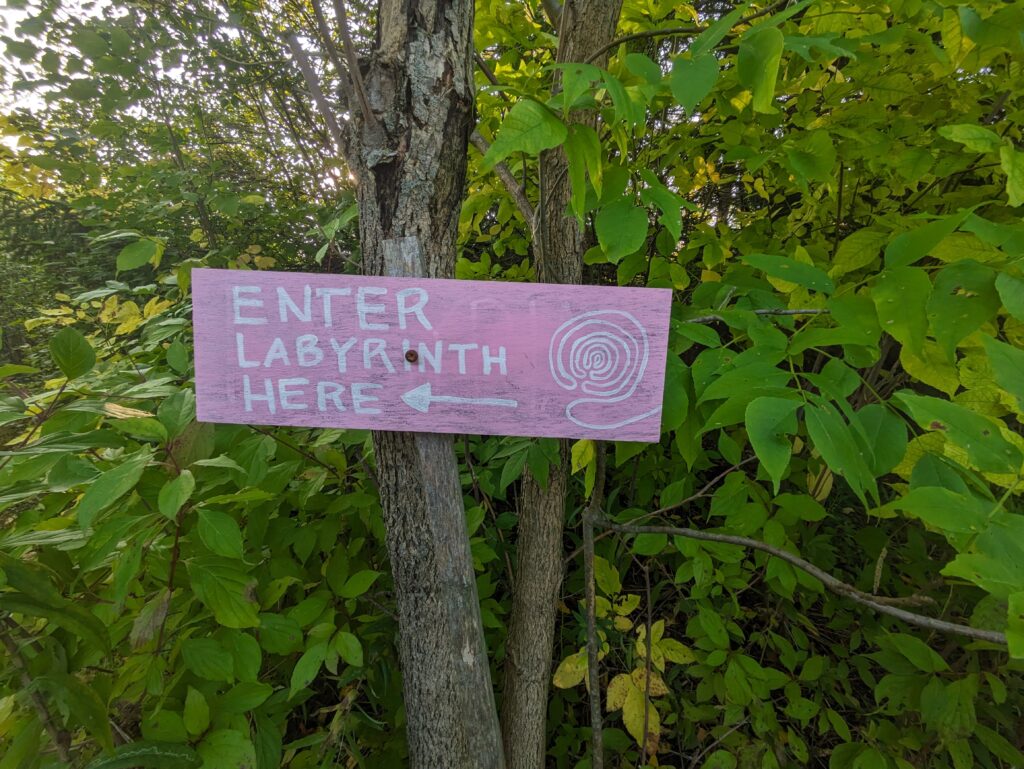
by Jeff Grygny
If not for the modest hand-painted sign, the entrance would be easy to miss; it’s just a narrow gap in the wall of brush that borders the manicured grounds of the Lynden Sculpture Gardens. But it leads to a subtle and mysterious journey.
Everyone had come with their own purpose: their own secrets, their struggle, their yearning. The artist had lit tea lights in small glass jars and handed them out with a soft wish to “enjoy the labyrinth.” We enter, solo or in pairs. The sun has just set, and the Earth is slowly putting on her twilight cloak as we walk a short dirt trail, pass under an arch created as if by coincidence with a fallen tree limb, and enter the labyrinth.
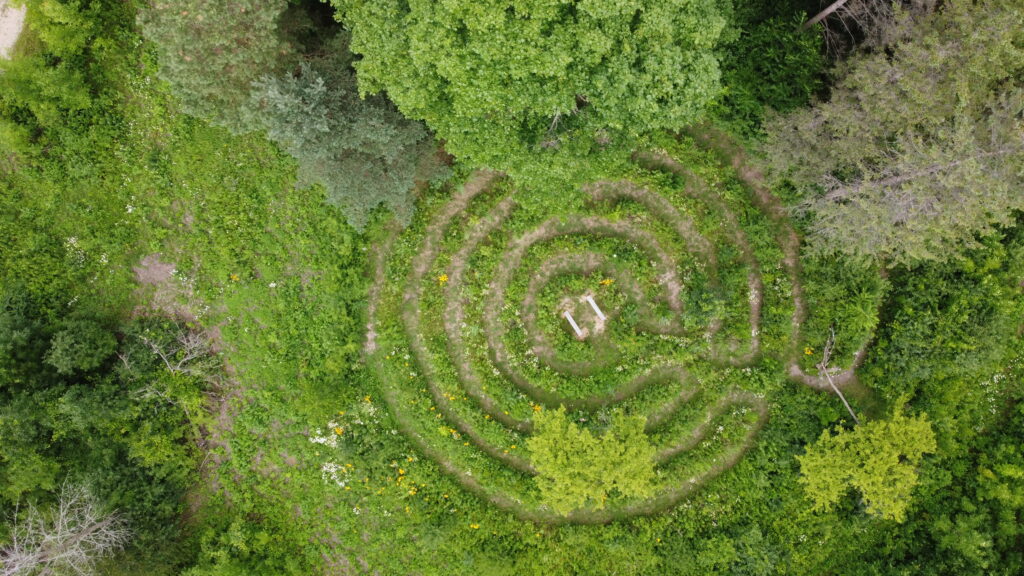
It’s not a maze: there are no puzzles to solve; the winding path folds like the curves of a brain, or looping intestines, along a single track that leads to some wooden benches in the center and then back out. Inspired by ancient designs like the pattern on the floor of Chartres Cathedral, it’s a form that’s become increasingly popular as a walking meditation; a journey through a space that’s both physical and psychological. Its paths were carved out of the prairie on a gently-sloping hillside in 2019 by Artist in Residence and Mary Knoll fellowship recipient Jenna Knapp, who has a strong personal connection to the practice of labyrinth walking. Since then, she’s found creative ways to engage people in this lovely work of land art, holding workshops in poetry, paper making, and seed gathering, enlisting volunteers to clear invasive plants and broadcast native seeds.
It’s half wild, like a work of nature: well-trod paths circle around and around, switchbacking to a contemplative rhythm in narrower and narrower arcs. A light breeze teases the nose with the scents of wild herbs and flowers, green and strangely spicy. As the light fades we become more and more like shadows; little stars moving back and forth, crisscrossing the curved channels with low walls of prairie plants like choreography.
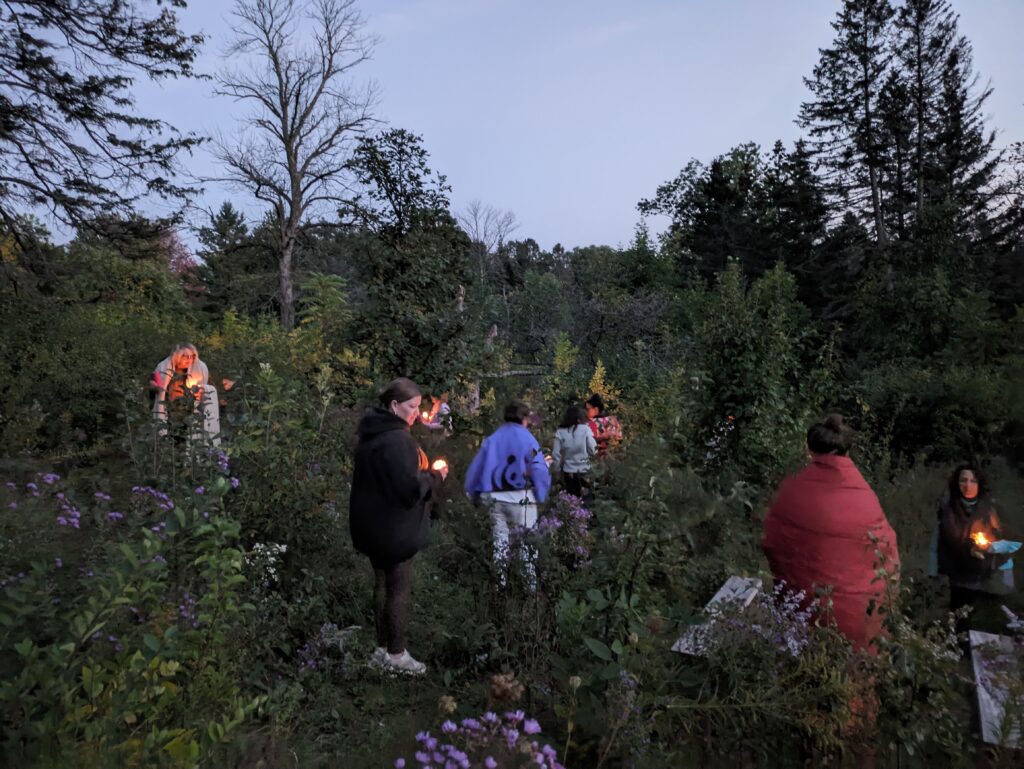
Knapp is committed to art that’s not just beautiful, but helpful. The labyrinth is a living, interactive sculpture. Like Andy Goldsworthy’s constructions, it blurs the boundaries between art and nature. It doesn’t impose its meaning on you; it’s an instrument for making your own meaning. You become the protagonist in a seamless, kaleidoscopic performance that joins art, nature, and psyche, a metaphorical journey in the earth and sky of it’s ever-changing landscape.
The candlelight walk is a coda to another extraordinary performance: a “sound bath” performed by the enigmatic artist Sevan Arabajian, a talented musician who received her craft from a visionary Indian guru known as “Akhilanka of the Temple of Singing Bowls, ” She plays a variety of instruments in a solo recital that takes us on an inner journey of its own, a fusion of the yogic principle of nada, sacred sound, and the avant-garde composer Pauline Oliveros’ Deep Listening.
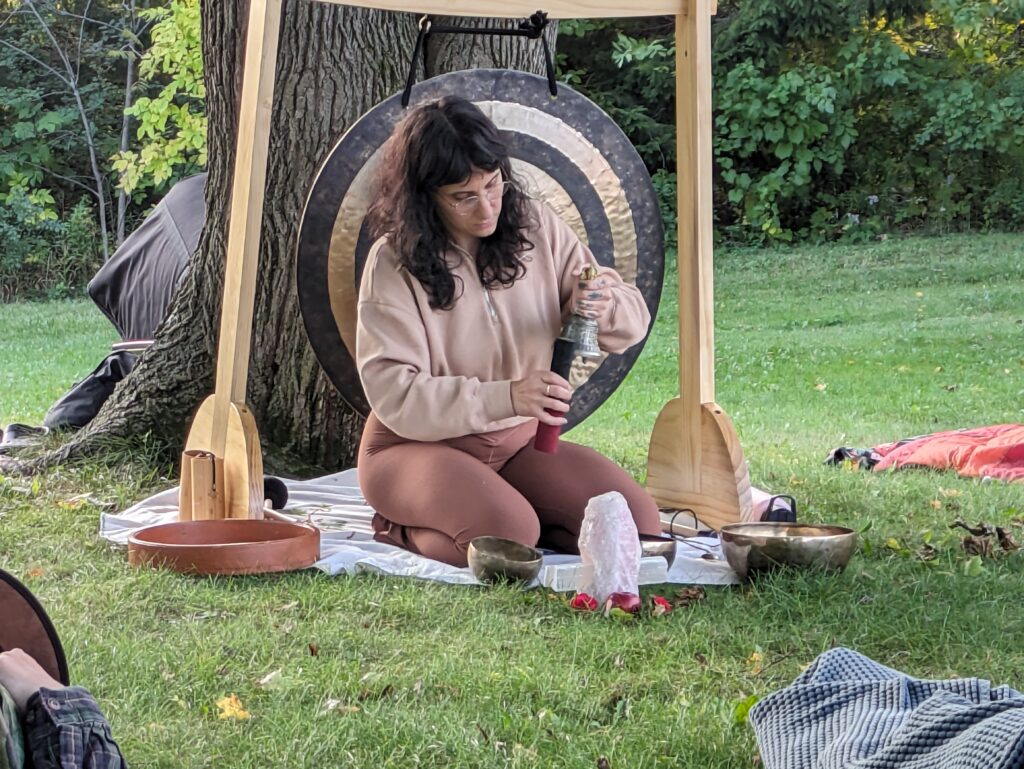
I’d never been to a concert where the audience lies on yoga mats, wrapped in blankets and sleeping bags until this, but it’s better than chairs for listening when it comes down to it. Under the sheltering branches of one of the grounds’ well-tended trees, the sounds and vibrations of Arabajian’s bell, drum, chimes, and singing bowls are exquisitely tuned to her audience’s senses. With large fuzzy mallets, she teases uncanny overtones from her large brass gong: eerie, resonant sounds like otherworldly voices.
Sound baths are typically done indoors; the outdoor venue adds yet another dimension to an already rich experience. First, there’s the distant roar of traffic, placing you on a green island in the midst of a great world of machines. It becomes the backdrop for nearer sounds: birds responding to the bell-like tones; crickets singing their late summer songs, a wayward duck, a chorus of crows, the whispers of the wind ruffling the leaves above: the living world becomes part of the concert, and the cool air reminds you that you, too, are a living thing of the earth. Arabajian skillfully brings us out of our trance with a guided meditation that kindles a bonfire in our hearts, which we then carry into the labyrinth in the tangible form of our little candles.
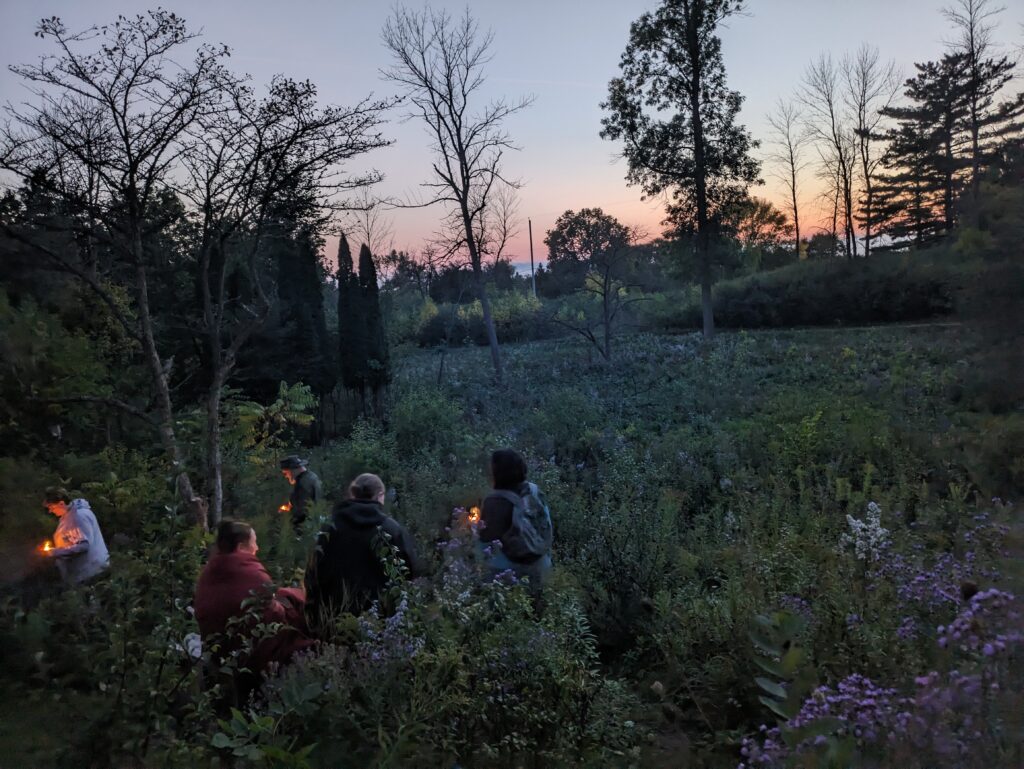
All of this is shamanism, the oldest and original of all art forms—in Brown Deer in the 21st century, imagine! Or, if you prefer, a multimodal, immersive art form that refreshes the wonder, courage, and joi de vivre that lets us face the world with a full heart. It’s a beautiful way to affirm our relationship with the living world—what ecophilosopher David Abram calls the “greater-than-human world.” All our ancestors enjoyed this relationship, but our modern way of life makes it easy to forget, at great cost to the health of our planet and to our own well-being. Art like Knapp’s prairie labyrinth is crucial for bringing nature back into our culture, and restoring our relationship with the living world.
This is the third year that Knapp and Arabajian have offered their quarterly sound baths and labyrinth walks. Like the best art, their work reminds us that the ordinary things of our lives are actually magical; full of meaning and power. The writer Daniel Quinn holds that the most secret things are secret, not because they are so remote, but because they are so simple and obvious that we usually take them for granted. As Glinda told Dorothy in The Wizard of Oz, we have to learn them for ourselves. Isn’t that what journeys are for?
